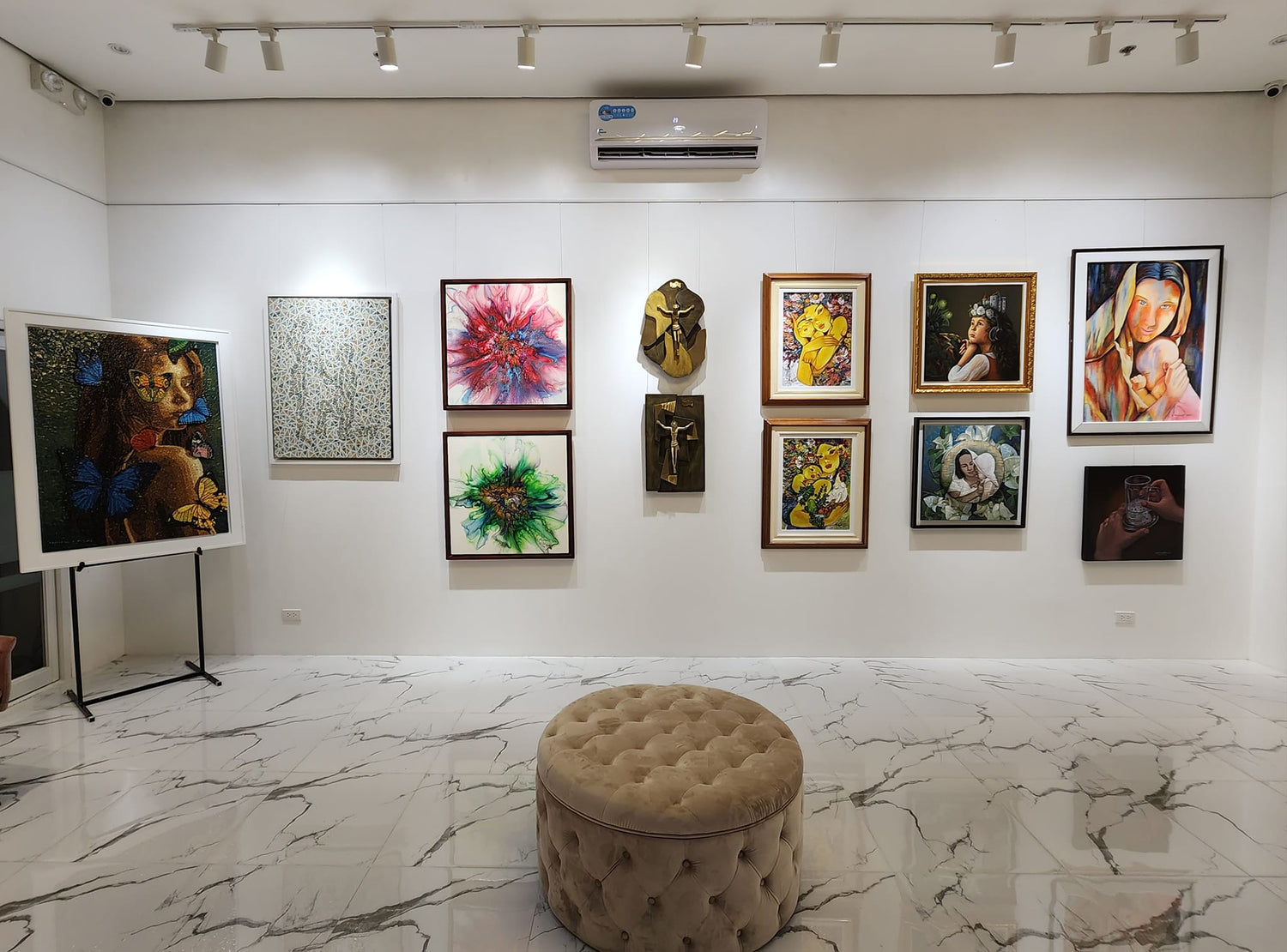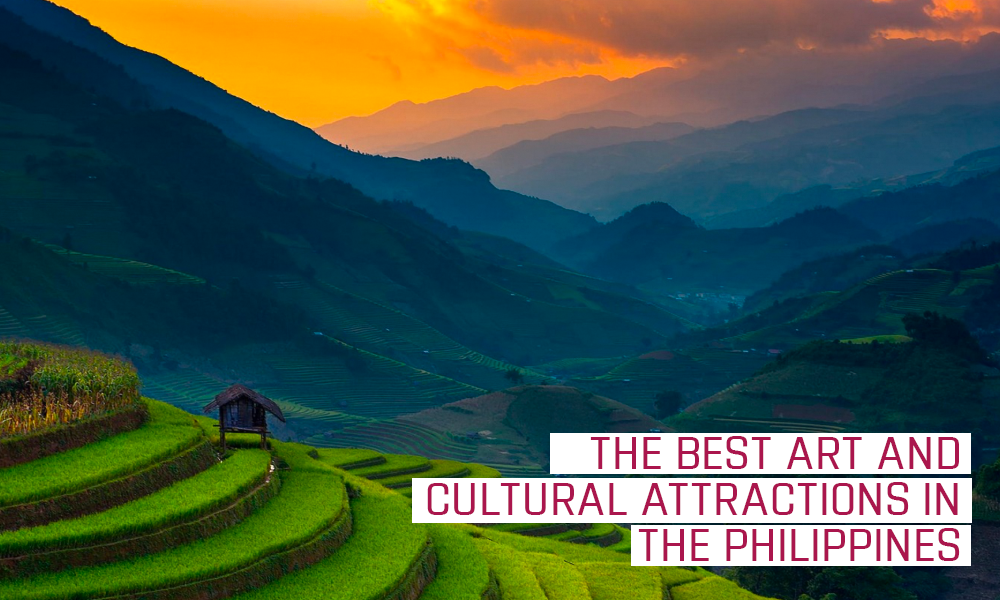The best art and cultural attractions in the Philippines
Arts and culture in the Philippines reflect the national identity of the Filipinos. Arts give people a deep understanding of the rich and diverse culture of the country. With its colorful past, the Philippines has survived a hundred years of colonial rule yet preserves some traditional arts that shape the culture and keep alive the spirit of Filipino society.
Historical and heritage sites, art museums, and churches are just some of the best cultural attractions to visit in the Philippines for art and culture enthusiasts. They give us insight into how it was to live during colonial periods, experience art handed down by the ancestors, and appreciate our identity as Filipinos. Here are 8 must-see destinations around the country to get your dose of art and culture experiences.
8 Renowned Cultural Attractions to Visit in the Philippines
1. National Museum of Fine Arts
The National Museum of Fine Arts, located along Padre Burgos Avenue, houses 29 galleries and hallway exhibitions of the country’s best artworks including those created by National Artists and famous painters and sculptors. Some art pieces are also on loan from different organizations, individuals, and government institutions.
As one of the cultural attractions, this neoclassical building was designed by Ralph Harrington Doane, Antonio Mañalac Toledo, and Juan M. Arellano between 1918 to 1926. The museum showcases Filipino artistry at its finest. Juan Luna’s award-winning painting, the Spoliarium, greets the visitors upon entering the museum. Featured collections also include the masterpieces of Félix Resurrección Hidalgo, Fernando Amorsolo, Carlos V. Francisco, and Vicente S. Manansala. Be sure to allocate sufficient time when you visit the museum.
DID YOU KNOW?
The National Museum used to be an old legislative building until the declaration of Martial Law when Congress was abolished by former President Ferdinand Marcos Sr. Congress was brought back in 1987. The House of Representatives and the Senate are now located in different sites. The old building was handed over to the Philippine National Museum in 1998 and continues to be one of the famous art places in the Philippines until now.
2. Manila Cathedral
The Manila Cathedral is recognized as the seat of the Archbishop of the Archdiocese of Manila. It is also known as the Minor Basilica of the Immaculate Conception. As a country predominantly Catholic, Manila Cathedral is among the cultural attractions that integrate the Filipinos’ deep faith in God and genuine artistry. This ornate cathedral is built using a Neo-Romanesque architecture style with a Latin cross layout. It has a dome-like ceiling, stained glass windows, marble floors, metal works, and large columns. The main façade displays statues of famous saints that were sculpted in Roman travertine stone. There are also bronze carvings that symbolize the cathedral’s colorful history and pay homage to the Blessed Mother Mary.
DID YOU KNOW?
While the Manila Cathedral is flocked by millions of Catholic devotees, it is also among the cultural attractions in Intramuros with a rich history. The cathedral was rebuilt several times due to destruction caused by war, earthquakes, fires, and typhoons since the original structure was constructed in 1581. Its eighth and present structure of the cathedral was completed in 1958. The cathedral was temporarily closed in 2012 for renovation and reopened to the public in 2014.
3. Casa Manila
As one of the cultural attractions in Intramuros, Casa Manila is a reproduction of a colonial house that gives a glimpse of how a wealthy Filipino family lived during the Spanish era in the country. Its furniture and architecture exude elegance and style. It imitated the façade of a house that once stood at Jaboneros Street, Binondo in the 1850s. The interior decor represents the turn of the late 19th century when lavish furniture and furnishings came from Europe and China. It has painted walls, crystal chandeliers, and golden furniture that showcase the affluent lifestyle of some Filipinos at that time. Stepping inside Casa Manila will transport visitors back in time. Taking a walk on the patio and zaguan, entresuelo, despacho, oratorio, cuarto principal, and comedor makes you realize why it is included among the favorite cultural attractions in the country.
4. Paete Wood Carving
Make sure to pass by Paete when you visit Laguna and witness how craftsmen skillfully chip woods and transform them into works of art. Paete was proclaimed as the Carving Capital of the Philippines in 2005 and remains one of the cultural attractions both visited by local and foreign tourists. This town is renowned for its centuries-old wood carving tradition handed down through various generations. Paete woodcarving tradition dates back to the pre-Spanish period. Religious icons like statues and crucifixes as well as retablos are exquisitely chiseled off from woods by artisans. This art of woodcarving helps keep Filipino culture and tradition alive.
5. Binondo
Binondo is known as Manila’s Chinatown. It was once a center for finance and commerce in the country. Including Binondo in your list of cultural attractions itinerary is a wonderful learning experience. When talking about Binondo, you cannot miss mentioning the district as a gastronomic hotspot. Authentic dim sum, siopao, and Chinese cuisine are served from restaurants to hawker-style stalls. You can also buy charms, lucky home decor, jewelry, and Chinese medicines, making Binondo truly one of the preferred cultural attractions in Manila. Walking along the popular streets of Binondo like Escolta is also a feast to the eyes with some buildings designed in neo-classical, art deco, and beaux-arts architecture. Aside from the two fountains that adorn a public plaza, the massive Binondo Church has a bell tower, a beautiful interior, and high-painted ceilings that represent the life of Jesus.
DID YOU KNOW?
Dr. Jose Rizal mentioned some of the prominent places in Binondo in his novels Noli Me Tangere and El Filibusterismo. Some of the old street names during Rizal’s time have been replaced. These include Calle Anloague (now Juan Luna Street), Calle Sacristia (Ongpin Street), Calle Rosario (Quintin Paredes Street), and Calle San Jacinto (Tomas Pinpin Street).
6. Tam-awan Village
The Tam-Awan Village is one of the famous art places in the Philippines visited by local and foreign tourists when they go to Baguio City. It showcases the rich culture and heritage of the Cordillera Region. Perched on a hill, the village features indigenous Cordilleran craftsmanship with traditional Ifugao and Kalinga huts that were rebuilt using original materials and new cogon roofs. As one of the cultural attractions, Tam-Awan Village holds art exhibits hosted by local artists. It also has a café where you can drink and savor the aroma of Benguet-blend coffee while enjoying the breathtaking sceneries of Benguet.
7. Alitaptap Artists’ Community
This artists’ community in Amadeo, Cavite is making its name as one of the emerging art places in the Philippines. With a lush nature at its inspiring background, the Alitaptap Artists’ Community is a compound where Filipino artists like visual artists, sculptors, writers, and musicians come together and reside. They also hold exhibits, shows, and workshops for visitors.
8. Nemiranda Arthouse
Angono is considered the Art Capital of the Philippines. It is home to Nemiranda Arthouse owned by Filipino painter and sculptor Nemesio “Nemi” Miranda Jr. It was built using local materials like sawali, bamboo, and old recycled materials from old churches and convents in Angono.
Nemiranda Arthouse is among the must-see art and cultural attractions in Rizal. The arthouse incorporates the art and the rich cultural heritage of Angono. It has higantes or giant papier-mâché puppets that greet visitors at the entrance of the atelier café. The venue is surrounded by murals and artworks like paintings and sculptures that represent the local folklore of Angono. Nemiranda Arthouse is one of the cultural attractions in Angono where you can learn art and culture at the same time.
ALSO READ: Most Famous Filipino Painters That Art Collectors Should Know
The Philippines has plenty of art and cultural attractions that reflect the rich heritage of the Filipinos. Art and culture are essential because they differentiate a country from the rest with its unique identity. Museums, arthouses, local destinations, churches, and art villages are examples of cultural attractions that you can visit if you want to experience and learn more about art and culture in the Philippines. While some venues have been famous platforms for showcasing art for a long time, other interesting art places in the Philippines have emerged over the years to promote the genuine artistry of local artists around the country.
Nami Art Gallery is also one of the must-visit art galleries in the Philippines. It provides a venue for emerging artists to display their beautiful artworks such as paintings and sculptures. By purchasing artworks from the gallery, you are not just owning a piece of art. You are also supporting the growth of promising Filipino artists.
Do you want to buy beautiful artwork for your home or workplace that exudes the rich culture of the Philippines? Visit Nami Art Gallery now.


